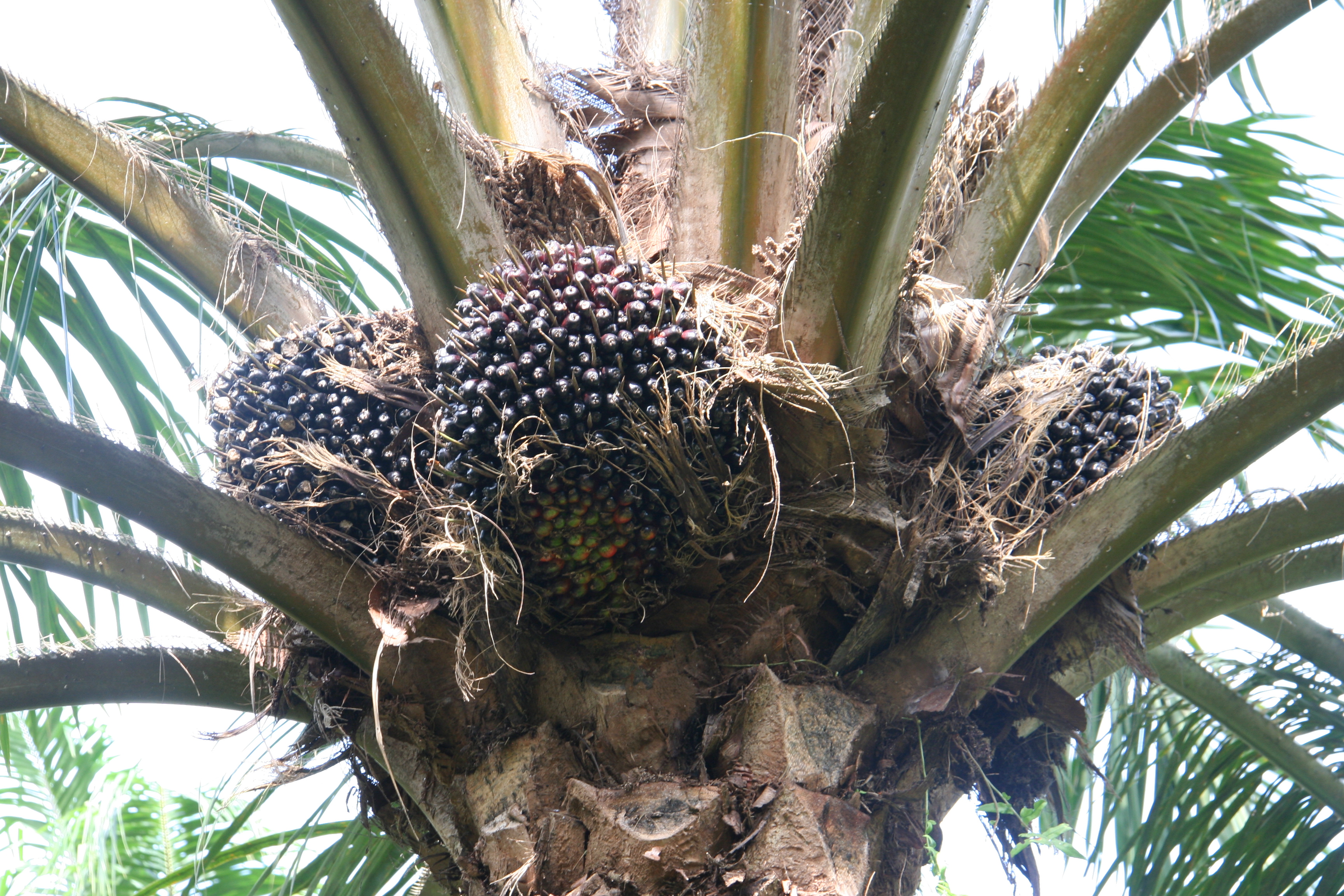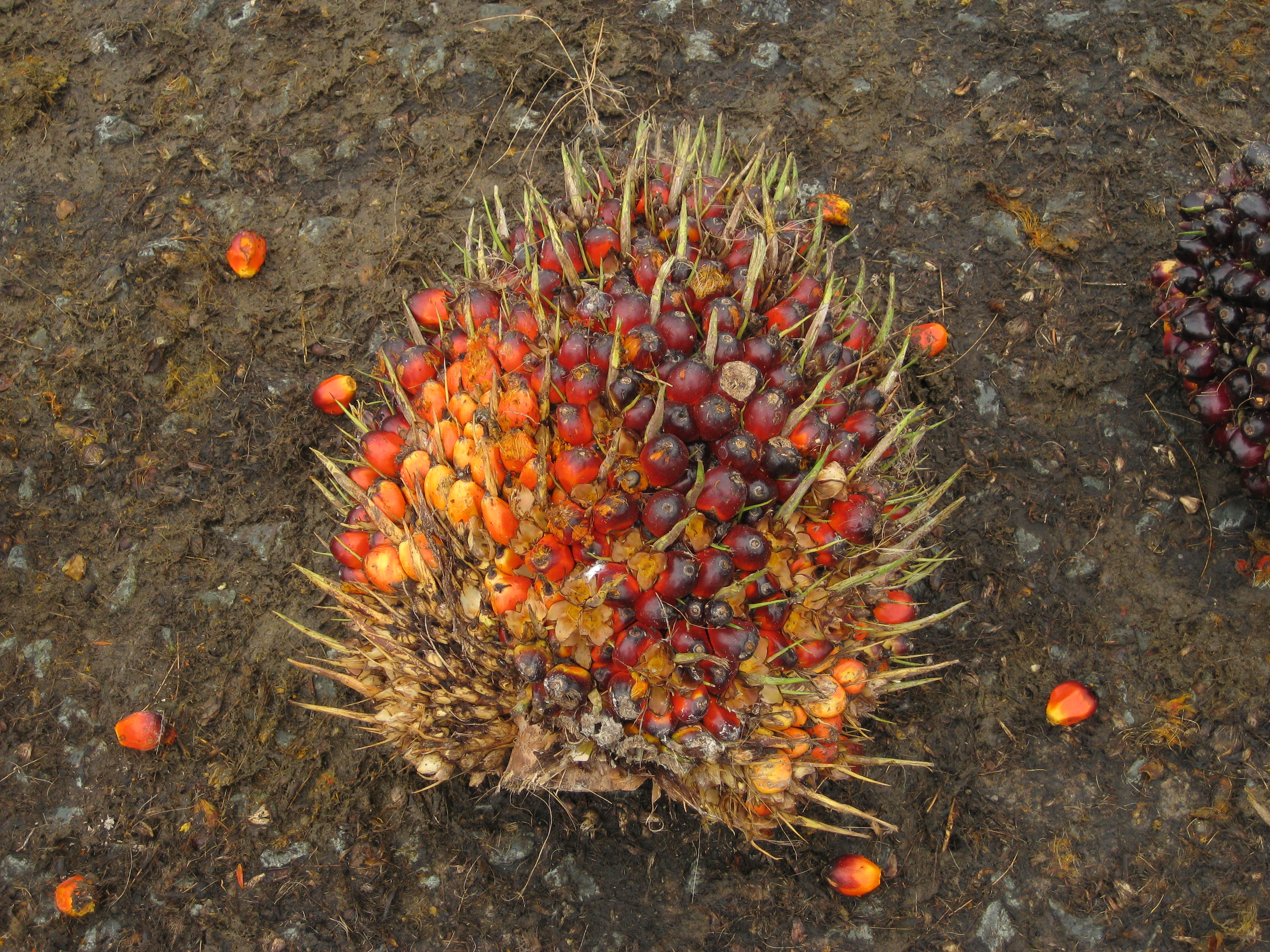 Overview
Overview
Oil palm (Elaeis guineensis Jacq.) is the most important vegetable oil crop in the world, with an annual production of around 75 million metric tonnes per year, and a global production area of around 20 million hectares. Our research focuses on several main themes, especially:
- Yield gaps in oil palm & crop modelling
- Good agronomic practices & intercropping (especially for smallholders)
- Biodiversity, sustainability and certification
We mainly work in Indonesia, Malaysia, Ghana, and Colombia.
Below, our projects are first listed in more or less chronological order. After this, the projects are listed per theme, and finally per country. You can also navigate directly to the Projects tab for an overview of our oil palm work, or to the Publications tab for a list of oil palm related publications.
List of projects
In recent years, we carried out or took part in the following projects (in more or less chronological order):
- K2K Colombia (2019-2020)
- Intercropping in smallholder plantations Sierra Leone (consultancy, 2019-2020)
- UKRI GCRF Trade, Development and the Environment Hub (2019-2025)
- GYGA Nebraska oil palm yield gap project (2018-2023)
- ANGIN I and II (2018-2021)
- K2K Malaysia (2017-2020)
- SEnSOR (2015-2021)
- Yield gap analysis in oil palm production systems in Ghana (2015-2019)
- In search of sustainable and inclusive palm oil production: the role of smallholders in Indonesia (2015-2019)
- Better management practices in Indonesian smallholder oil palm plantations (2013-2019)
- Oil palm production in Indonesia: carbon footprint and diversification options (2013-2019)
- SUSPENSE (2012-2018)
Projects per theme
Theme 1: Yield gaps in oil palm
 We work on yield gaps from two main angles: through modelling (with PalmSim) and by the implementation and analysis of in-field demonstration plots. The PalmSim model was developed in 2013 by Castaneda-Vera and colleagues; the model was published in 2014 by Hoffmann and colleagues. PalmSim models the potential and the water-limited yield of an oil palm plantation during the plantation lifetime. In recent years, the model has been translated to Python, and currently the water balance of the model is being revised. While we use PalmSim to model the potential and attainable yield, we use surveys, experiments and data collected from farmers and companies to understand the actual yields and discover the causes of yield gaps. Our objectives are to understand the magnitude of yield gaps and the underlying causes, and to propose ways to close yield gaps. Related projects are:
We work on yield gaps from two main angles: through modelling (with PalmSim) and by the implementation and analysis of in-field demonstration plots. The PalmSim model was developed in 2013 by Castaneda-Vera and colleagues; the model was published in 2014 by Hoffmann and colleagues. PalmSim models the potential and the water-limited yield of an oil palm plantation during the plantation lifetime. In recent years, the model has been translated to Python, and currently the water balance of the model is being revised. While we use PalmSim to model the potential and attainable yield, we use surveys, experiments and data collected from farmers and companies to understand the actual yields and discover the causes of yield gaps. Our objectives are to understand the magnitude of yield gaps and the underlying causes, and to propose ways to close yield gaps. Related projects are:
- GYGA Nebraska oil palm yield gap project (2018-2023)
- K2K Malaysia (2017-2020)
- K2K Colombia (2019-2020)
- Yield gap analysis in oil palm production systems in Ghana (2015-2019)
- Better management practices in Indonesian smallholder oil palm plantations (2013-2019)
Theme 2: Good Agronomic Practices & intercropping
To close the yield gap in oil palm and spare land for rainforests, Good Agricultural Practices are an important tool. Better practices can also help smallholders to increase their productivity and their income. As an additional option, intercropping is an especially useful practice in immature oil palm plantations (the first two-three years after planting) to make sure that farmers have a source of income while the young palms grow. Several of our projects include research on current and improved management practices in oil palm plantations and on intercropping:
- Intercropping in smallholder plantations Sierra Leone (consultancy, 2019-2020)
- ANGIN I and II (2018-2021)
- K2K Malaysia (2017-2020)
- Yield gap analysis in oil palm production systems in Ghana (2015-2019)
- In search of sustainable and inclusive palm oil production: the role of smallholders in Indonesia (2015-2019)
- Better management practices in Indonesian smallholder oil palm plantations (2013-2019)
- Oil palm production in Indonesia: carbon footprint and diversification options (2013-2019)
Theme 3: Biodiversity, sustainability and certification
We collaborate with several partners, such as the RSPO and a number of NGOs, to support a more sustainable oil palm sector. Our focus is on the inclusion of smallholders, because they are easily excluded from sustainable supply chains and they are under-represented in terms of RSPO certification. Most projects that we do have a strong focus on sustainability, and several projects really revolve around this topics:
- UKRI GCRF Trade, Development and the Environment Hub (2019-2025)
- SEnSOR (2015-2021)
- In search of sustainable and inclusive palm oil production: the role of smallholders in Indonesia (2015-2019)
- SUSPENSE (2012-2018)
Projects per country
- Global:
- Indonesia:
- GYGA Nebraska oil palm yield gap project (2018-2023)
- ANGIN I and II (2018-2021)
- SEnSOR (2015-2021)
- SUSPENSE (2012-2018)
- In search of sustainable and inclusive palm oil production: the role of smallholders in Indonesia (2015-2019)
- Better management practices in Indonesian smallholder oil palm plantations (2013-2019)
- Oil palm production in Indonesia: carbon footprint and diversification options (2013-2019)
- Malaysia:
- Thailand:
- Colombia:
- Ghana:
- Sierra Leone:
- Intercropping in smallholder plantations Sierra Leone (consultancy, 2019-2020)
Photo credits: Lotte Woittiez
